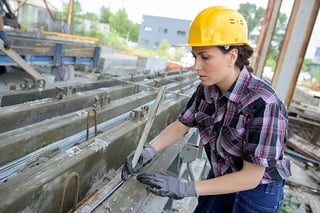HBI Releases its Fall 2025 Construction Labor Market Report
Originally Published by: HBS Dealer — October 13, 2025
SBCA appreciates your input; please email us if you have any comments or corrections to this article.
The Home Builders Institute (HBI) has released its Fall 2025 Construction Labor Market Report, and it's chock-full of charts, stats, trends and datapoints that paint a vivid picture of who's building the nation right now.

Women comprise a growing share of construction employment, reaching a 20-year high of 11.2% in 2024.
Labor shortages leads the list of major factors shaping the U.S. homebuilding landscape, with HBI estimating losses of $10.8 billion per year due to workforce gaps. The NAHB (which founded HBI) shows its math: "The aggregate annual impact of the skilled labor shortage in the home building sector is $2.663 billion in terms of higher carrying costs and $8.143 billion in terms of lost single-family home building (19,000 homes)."
Despite the overall labor shortages, the report does contain some bright spots. HBI finds that women now comprise a growing share of construction employment, reaching a 20-year high of 11.2% in 2024. That's up considerably from 9.1% in 2017.
The rumors of Gen Z flocking to the trades might also be panning out. According to the report, the percentage of workers born between 1997 and 2012 who are in the construction labor workforce has more than doubled, increasing from 6.4% in 2019 to 14.1% in 2023.
More key points from HBI's report include:
- There are currently 3.3 million payroll residential construction workers.
- Amid a market slowdown, home builders and remodelers lost 26,100 jobs over the last 12 months.
- Home building non-supervisory workers’ wages trended higher, rising 9.2% in July, substantially outpacing inflation and wage growth for the overall sector.
- Immigrant workers now account for 25.5% of the construction workforce, a new historic high. In construction trades, the share of immigrants is even higher, with one in three craftsmen coming from outside the United States.
- The reliance on foreign-born labor continues to spread outside traditional immigrant magnets. HBI's data shows New Jersey registered the second-highest share of immigrant workers (40%) in 2023, closely following California. Nevada and Maryland, where immigrants account for over a third of the construction labor force (36%), also illustrate spreading reliance on immigrant labor.
- In Georgia, Connecticut, North Carolina, Virginia, Arizona, Massachusetts, and Illinois, more than a quarter of construction workers are foreign-born.
- For the time being, the impact of AI on the home building industry is limited but is likely to evolve in the coming years.
Read more on HBI's insightful construction labor data here.
